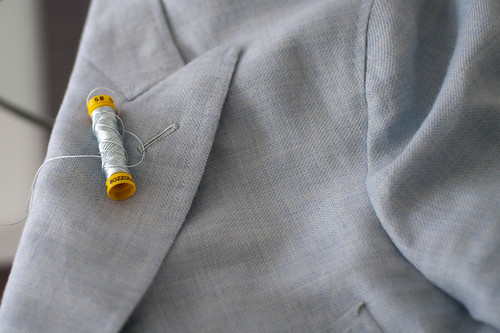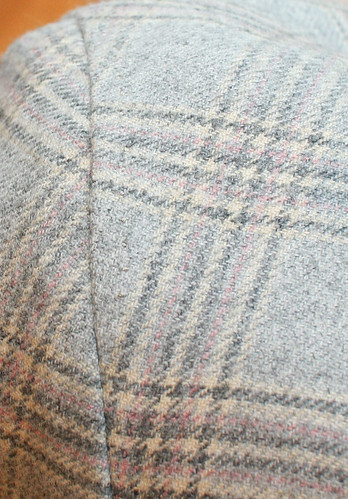Readers may remember my last soft coat which was the first prototype for a model which became very popular. So when it was recently suggested that I might want to attend a certain event in Atlanta in the next few weeks, I decided it was as good an excuse as any to make another soft coat- they are particularly fond of soft, rounded shoulders in the deep south and I don't have much clothing for that kind of weather.
The coat has a self-cloth facing, and I used cotton pocketing for the yoke and trimming. Bemberg in the sleeve.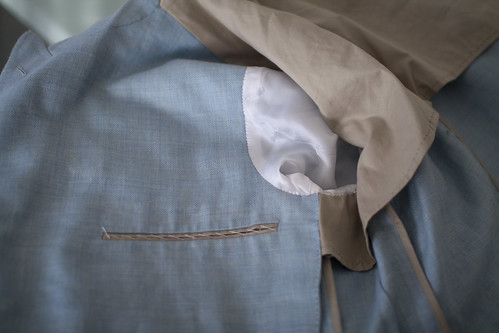
There is no haircloth or chest piece and no shoulder pad- only the front canvas and some light felt to cover it.
This is how thick the shoulder construction is, which has been done in the "spalla camicia" style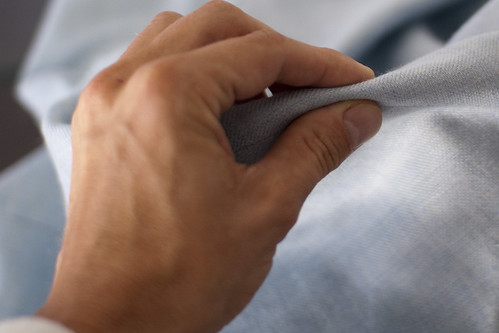
which gives this soft, round, slouchy look.
I'm sure somebody knows the name for this kind of jigger shank- I don't know how to call it. Anyone?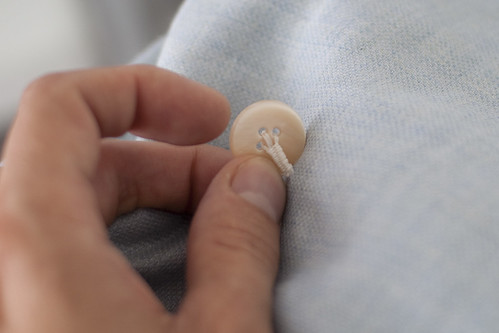
Since I won't make many coats in this colour, I ordered the small 10m spools of silk buttonhole thread from Tristan, in BC, Canada. As far as I know it is the only source in Canada for buttonhole silk in small quantities, and they are the exclusive North American distributor for Tre Stelle's Bozzolo silk. It has a nice sheen to it and is worth trying out.
EDIT- I got the following message on another post- We are a sister company to Tristan Italian threads. We are the US importers of Cucirini Tre Stelle thread from Milan, Itay. The Seta Bozollo silk is a 24 wt thread that comes on a 11 yd spool. Our shopping cart is www.carmenwarehouse.com or catalog is www.GilbreathThreads.com